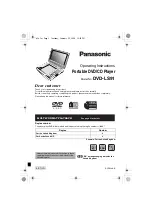
2-4
Project 25
What is Project 25?
Project 25 (P25) is a standard for the manufacturing of interoperable digital
2-way wireless communications products. Developed in North America under
state, local and federal representatives and Telecommunications Industry
Association (TIA) governance, P25 is gaining worldwide acceptance for
public safety, security, public service, and commercial applications.
The published P25 standards suite is administered by the Telecommunications Industry Association (TIA Mobile and
What Are the Benefits of P25?
From the beginning, P25 has targeted four primary
bj ti
What is Required for P25 Compliance?
At a minimum, a P25 radio system must provide
i t
bilit ith th
d t
P25 St d d
The published P25 standards suite is administered by the Telecommunications Industry Association (TIA Mobile and
Personal Private Radio Standards Committee TR-8). Radio equipment that demonstrates compliance with P25 is
able to meet a set of minimum requirements to fit the needs of public safety. These include the ability to interoperate
with other P25 equipment, so that users on different systems can talk via direct radio contact. The P25 standard was
created by and for public safety professionals.
objectives:
•
Allow effective, efficient, and reliable intra-agency
and inter-agency communications
… so organizations can easily implement
interoperable and seamless joint communication
in both routine and emergency circumstances.
•
Ensure competition in system life cycle
interoperability with these mandatory P25 Standard
components:
•
The Common Air Interface (CAI) specifies how
information is coded, transmitted and received
over the air.
It enables users to interoperate and communicate
digitally across networks, agencies, and vendors.
•
The Improved Multi-Band Excitation (IMBE)
procurements
… so agencies can choose from multiple vendors
and products, ultimately saving money and
gaining the freedom to select from the widest
range of equipment and features.
•
Provide user-friendly equipment
so users can take full advantage of their radios’
p
(
)
vocoder converts speech into a digital bit stream.
Test panels judged IMBE as the coding scheme
most successful at making male and female
voices audible against background noises such as
moving vehicles, sirens, gunshots, and traffic noise
– the conditions of public safety use. DVSI has
introduced a new low data rate AMBE+2™ vocoder
that sets a new standard for high-quality, high-
… so users can take full advantage of their radios
lifesaving capabilities on the job – even under
adverse conditions – with minimal training.
•
Improve radio spectrum efficiency
… so networks will have enough capacity to handle
calls and allow room for growth, even in areas
where the spectrum is crowded and it’s difficult for
agencies to obtain licenses for additional radio
performance speech quality at data rates from 2.0
to 9.6 kbps and Icom IC-F9011 series include this
AMBE+2™ enhanced vocoder.
P25 has also defined standard modes of operation to
enable multi-vendor interoperability for additional
system functions: trunking, encryption, and over-the-
air rekeying, to name a few.
agencies to obtain licenses for additional radio
frequencies.
What is the Status of P25 Today?
P25 systems are available today and being deployed
globally. Many organizations have mandated that new
land mobile radio system purchases follow P25
standards. P25 is ongoing -- the standard continues to
evolve as the needs of users and the capabilities of
t h l g
d
B th
d
A set of defined system interfaces allow the P25
system elements to communicate with host
computers, data terminals and the public switched
telephone network (PSTN).
Looking to the Future
There are two phases of P25 development:
•
Phase 1 is completed.
It ifi
12 5
kH
b d idth
9
new technology advance. Both users and
manufacturers have an important role to play in
shaping P25.
It specifies a 12.5 kHz bandwidth.
•
Phase 2 is in development.
It will use a 6.25 kHz equivalent bandwidth to
allow better spectrum efficiency and benefit a
greater number of users










































